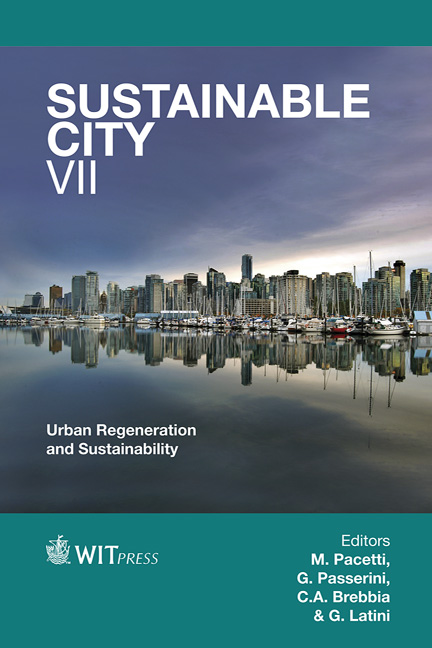Proportional Analysis Of Façade Openings On Residential Buildings From The Modernism Period By The Architect Belobrk Against The Backdrop Of Bioclimatic Architecture And Current Climate Changes
Price
Free (open access)
Transaction
Volume
155
Pages
13
Page Range
441 - 453
Published
2012
Size
1,465 kb
Paper DOI
10.2495/SC120371
Copyright
WIT Press
Author(s)
V. Panic & K. Bunjak
Abstract
World policy has lately been increasingly geared toward current issues of limited energy resources and environmental crisis. Analyses have indicated that the built environment is the largest energy consumer and most hazardous gas emitter. Over the years, a whole range of recommendations and guidelines have been issued on building design. Nonetheless, the wider and more important question is the position of existing buildings (designed in accordance with local, natural and social determinants or not) at the time of climate change. The subject matter of this paper is the proportional analysis of facades and façade openings of residential buildings from Belgrade’s Modernism period before the World War II (1930–1940). Buildings of this type represent the majority of the built environment in the city. A case study included three residential buildings by the architect Momcilo Belobrk at: 63 Njegoseva Str., 14 Dobracina Str. and 17 Dositejeva Str. Besides the direct proportional examination of the chosen buildings and their facades, potential connections with traditional proportioning principles have also been studied. The context and environment have been analyzed, and, primarily, the climate characteristics. This paper deals with exploring potential connections between the proportions of the façade openings and the natural conditions found at the locations. Subsequently, proportion and distribution of openings on façade shall be analyzed in the context of climate change. The analysis shall address the question of whether the building was designed in a way that enabled its openings’ proportions to steam the climate and site characteristics. If yes, the question is how such a building behaves today,
Keywords
climate change, bioclimatic architecture, proportional analysis, Belgrade Modernism, Momcilo Belobrk





